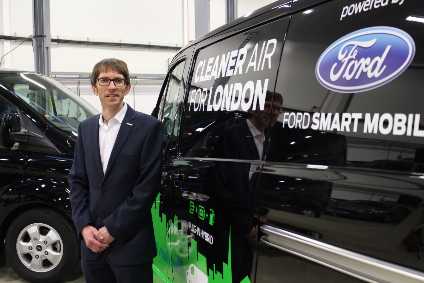
The conventional view is that technology transfers from the aerospace industry to the automotive sector but James McGeachie, director of engineering at Prodrive Advanced Technology has seen an upsurge in opportunities for transfer in the opposite direction. We spoke to him about some of his recent experiences.
Why would an aerospace company approach an automotive supplier?
The automotive industry has become very adept at delivering exhaustively validated products in record time. As the aerospace sector becomes increasingly competitive, they too are investigating ways to speed up development in order to reduce costs. With typical automotive programme timing reduced to three years or less while aerospace programmes still take 10-20 years, our clients are investigating the potential to close that gap, at least partially.
Where is the greatest scope for saving time?
Simulation and predictive modelling is at the heart of engineering development in both industries. There is an optimum level of modelling accuracy for a given stage in an engineering programme; one that will deliver the right design decisions as early as possible. Often, we can get 80 per cent of the way in 20 per cent of the time but the last 20 per cent will take 80 per cent of the time. Ultimately we must get the final product 100 per cent right but during the design process, where important trade-offs are made and alternative solutions are ranked in order of merit, we don't need the last 20 per cent in order to make the right decisions and we haven't got the time to wait for it. We need to confirm the design direction before major commitments are made to long lead items, such as tooling and facilities. At Prodrive, we call this the principle of 'optimum modelling accuracy' and have been using it to good effect since the late 1990s.
So are your aerospace customers primarily interested in your engineering techniques?
How well do you really know your competitors?
Access the most comprehensive Company Profiles on the market, powered by GlobalData. Save hours of research. Gain competitive edge.

Thank you!
Your download email will arrive shortly
Not ready to buy yet? Download a free sample
We are confident about the unique quality of our Company Profiles. However, we want you to make the most beneficial decision for your business, so we offer a free sample that you can download by submitting the below form
By GlobalDataNot only that; they come to us for a wide range of services. In some cases, we are directly transferring skills in areas such as high-quality composites or control systems and power electronics. Our experience in supplying sophisticated interior modules and mechanisms to Jaguar Land Rover, Volvo and others transfers straight across to commercial aircraft interiors, particularly for premium applications where refined operation and consistently high visual standards are required. Indeed a leading aircraft manufacturer saw our work on interior car modules and has asked us to use these same skills on their interior systems.
Can you tell us more about your control and electronics work?
We have worked with a major aerospace business on a number of projects; one being the development of a compact high powered inverter to drive a new generation of electric fuel pumps for commercial jet engines. We helped package the unit and carried out thermal analysis, which led to us designing the complex cooling galleries which were manufactured using 3D laser sintering. We also designed the busbar high powered printed circuit board, the internal and external wiring harnesses and developed the code for the motor control software and communications. Once again this project came about after they had seen the work we had done creating a multiport DC-DC converter for electric and hybrid vehicles.
At what stage of a programme would you typically be involved?
Depending on the client's needs, we can contribute from the concept design stage, through development, and into the quality assured supply of finished parts and assemblies. Our simulation methods are most valuable during the early design stages but our capacity to supply production quantities of up to a few tens of units per week is also highly relevant to the aerospace market.
Are there benefits from being involved through to production?
Supplying production, or high-quality pre-production, units helps us to further compress our clients' programme timescales. By taking control of the design, development and prototyping of a system, we can apply fast-track processes, as we did with the plug-in hybrid Ford Transit, which began fleet trials just 13 months after the concept was confirmed. This necessitated finding innovative ways to deliver the customary level of design rigour and validation within a significantly reduced timescale. By designing the demonstrator vehicles to Ford standards from the outset, we merged the first two hardware phases, shortening the vehicle programme by addressing many of the issues which are normally deferred until later.
What elements are necessary to deliver a fast-track programme?
The established practice is to develop new technology 'off-line' and 'bookshelf' it for adoption into a future production programme downstream, which inevitably leads to a series of consecutive actions.
The Transit programme shows what can be achieved using a different skill-set to the norm, with greater inter-disciplinary expertise and more traditional, hands-on engineering, enabling significant integration of what would, otherwise, be consecutive programme stages. Many large OEM customers are compelled to operate within hierarchical structures to ensure they maintain the necessary depth of expertise and control. A smaller, more agile, consultancy can work to the same quality standards through tightly integrated teams of proficient multidisciplinary engineers, operating within less constrained environments and capitalising on the ease of collaboration.



